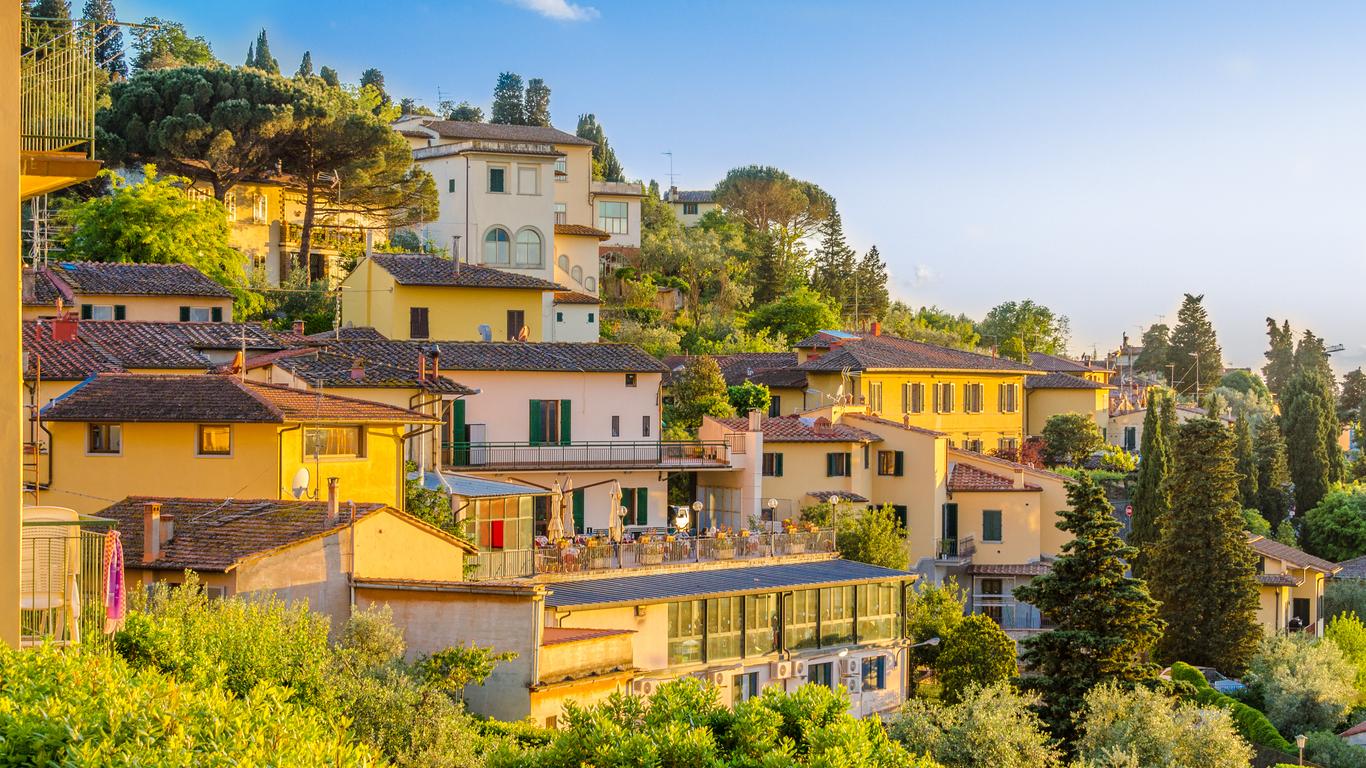Less than 10 kilometres from Florence, the small town of Fiesole offers an escape from the busy city streets, with an abundance of remarkable historical features, making it the perfect day trip and countryside getaway. With a population of just over 14,000, Fiesole might not be very culturally different to Florence, but it has a range of ancient landmarks to match any big tourist city. It also has the beautiful scenery to rival urban areas, located on a hilltop looking down over the countryside of Tuscany.
One main attraction of Fiesole is its Etruscan-Roman Archaeological area, which, dating back the 8th Century BC, contains the ruins of Roman baths and a large outside theatre, all surrounded by the remains of the old Etruscan walls. The Civic Museum hosts artefacts uncovered in the area and a vast collection of ceremonies from Ancient Greece and Etruria, and the Bandini Museum across the road is home to rare Florentine works of art. Visitors can also explore the religious landmarks of the area, such as the Cathedral of Fiesole and the Monastery of San Francesco, reached by a tough climb up the hill, overlooking Florence from a height of almost 300 metres. Local events in Fiesole include a monthly antique market, regular food stalls and the summer cultural festivals.
Local city buses of Florence also provide access to Fiesole, which run along the ATAF lines and leave from the train station and San Marco Square. The tourist sightseeing bus also travels this direction. Alternatively, visitors can hike to the nearby town via Vecchia Fiesolana along a steep but beautiful route with captivating views of the local scenery.
With over 2,000 years of history, the roots of Fiesole culture include Roman colonisation, pagan communities and even mystic education, as it once held a school devoted the art of divination. Although briefly independent during the Middle Ages, it had a long-standing conflict with nearby Florence and Florentines eventually conquered it in 1125. It has been mention by various Italian creatives and even Dante referred to the town in his “Divine Comedy”.





